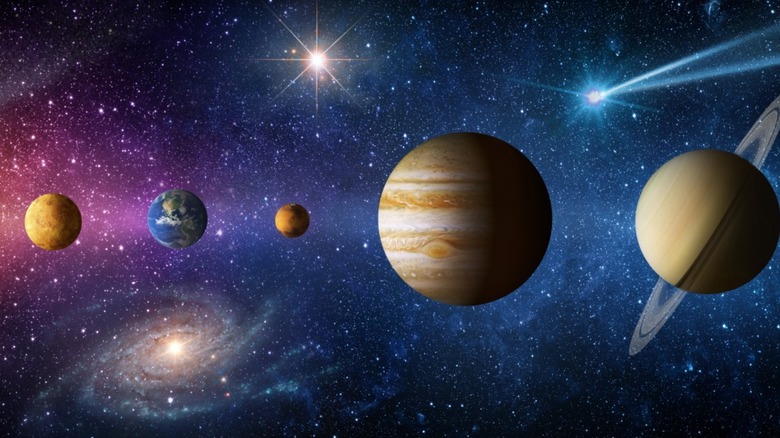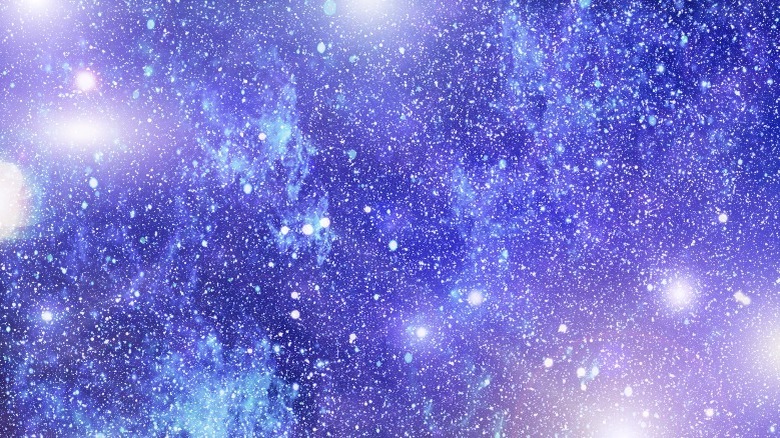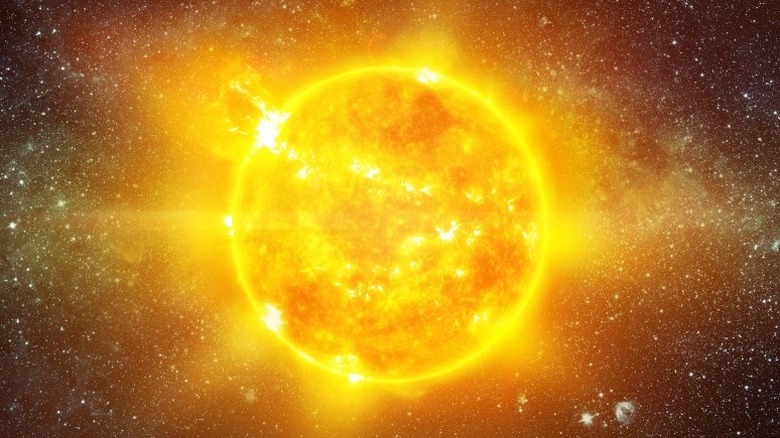How Old Is Our Solar System?
Scientists have put some pretty firm estimates on the age of the universe itself, revealing it is approximately 13.8 billion years old. This figure was determined by studying the age of the objects within the universe and how quickly it is expanding, according to Space. Using the rationale that the objects within the universe cannot be any older than the universe itself, stars are studied to help give a starting point for this determination. The gas giants only have enough fuel to keep them burning for so long. Knowing that the bigger the star, the more fuel it takes to keep it glowing, the first stars in the universe exploded rather quickly (in the cosmic sense) and bathed a young universe in stardust.
The cosmic radiation left over from the Big Bang has been studied, measured, and mapped by NASA's Wilkinson Microwave Anisotropy Probe (WMAP) and the European Space Agency's Planck spacecraft. Doing so helped determine the expansion rate of the universe, which Planck used to place the age at 13.82 billion years and WMAP at 13.772 billion years, according to the European Space Agency.
Scientists know that when the universe came into being, not everything in it spontaneously appeared. The formation of the more than 100 million galaxies took additional time, as did the immeasurable number of solar systems within those galaxies. Using the same logic as noted above, we know our solar system cannot be older than the universe. But how young is it?
The creation of our solar system
Space explains how scientists theorize our solar system was formed. Astronomers and physicists who have studied solar systems much younger than our own have determined these systems are formed when massive concentrations of dust and gases clump together to produce a star. It's believed that our sun is the result of this same process.
The gases begin to clump together rapidly, growing denser and denser. Eventually, this gaseous cloud becomes so dense that parts of this growing body collapse on itself. When the pressure inside reaches a certain amount, fusion occurs and the hydrogen is converted into helium. This causes a massive wind that expels leftover material from the body to be blown away from it. Out of this, a young star is created. The material that is leftover from this star is left compressed into a disc that rotates around the newly formed solar being.
Everything present in our solar system was created out of this disc. The planets, moons, and asteroids were all rooted in this disc of leftover star material that would eventually clump together in groups and break away while still retaining an orbit around the sun that it was grown from.
The Solar Center at Stanford claims that since the sun came to be at the same time as the disc that once rotated around it, we can determine the age of our solar system by simply studying the core material that was once housed inside of the disc itself. What's the material they study to gauge how old our part of the universe is? Meteorites.
Our sun is 4.6 billion years old
Meteorites are analyzed to determine the radioactive decay of two elements: potassium and uranium (via World Atlas). Using the knowledge that all material will radioactively decay into a single isotope, it's only a matter of determining what the half-lives of the materials in the meteorites are. Universe Today discusses how these materials can have half a half-life of 700 million to 100 billion years. They use radiometric dating to determine the last time the rock being analyzed "was either melted or disturbed sufficiently to re-homogenize its radioactive elements."
By using this technique, meteorites studied are 4.6 billion years old. The rocks on the Earth that were studied in the same manner were found to be only 4.3 billion years old.
As these meteorites were formed from the disc that was created at the same time as the sun, they will be the same age. That puts the age of our solar system at approximately 4.6 billion years old and counting.


